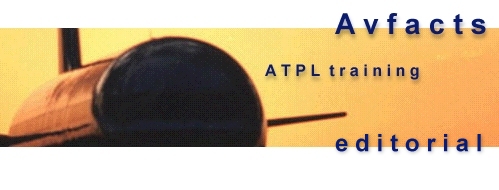




 |
 |
  |
 |
Aircraft Systems topic 1.
TCAS
 |
 |
| The B727 seconds before ground impact. Note damage to right hand wing due to collision with C172 aircraft. |
Fig 1. TCAS display panel.
|
Background
With the density of air traffic increasing around the world, it became apparent the the mid-air collision risk would rise also, and a system was developed to make pilots situationally aware of other nearby air traffic (TCAS 1), and in certain more sophisticated systems recommend an escape manoeuvre to best avoid an impending mid air collision (TCAS 2).
One accident which focussed attention on the need for an on-board traffic alert and avoidance system was that in which a Boeing B727 collided in midair with a Cessna 172 over San Deigo in the USA. See picture above. The C172 hit the B727’s right wing with disastrous results. All occupants of both aircraft died.
The collision occurred when both both aircraft were under ATC radar surveillance in the terminal area.
Method of operation
TCAS uses the transponder signals from nearby aircraft to determine their position "relative" to your aircraft. TCAS does not rely on the reflection of pulsed radio energy off a target as does radar.
Instead, the two transponders simply talk to each other.
It is vitally important that you realise that although your aircraft is fitted with
TCAS, it will not be able to give you advice or warnings about other aircraft near you
that are not transponder equipped, or have their transponder turned off.
(ie: Non-Transponder equipped aircraft are invisible to TCAS).
TCAS will NOT warn pilots of the aircrafts likely collision with terrain. That warning system is called the Ground Proximity Warning System (GPWS). After all, mountains are not fitted with transponders.
Basically the TCAS in your aircraft "interrogates" transponder signals from other aircraft near you, and presents these on a cockpit display panel such as the one in Fig 1. Your aircraft is always in the centre of the screen. Other aircraft are displayed relative to you in various symbologies depending on their level of threat to your aircraft.
Symbology
An open white diamond... signifies aircraft which though nearby, are not assessed as being a threat at that moment. It is called a "Surveillance target".
A solid white diamond... If the target aircraft gets within 1, 200 ft and 6 miles of your aircraft it will become what is referred to as a "Proximity Target". No aural associated with this.
A solid yellow circle... signifies that the target aircraft is within 40-45 seconds of
the point of closest approach, and to make you aware of this the crew are advised through
an aural message of "Traffic, Traffic". The flight crew should now attempt to
sight the traffic visually, using the relative position indicated on the display screen as
a guide.
The "Traffic, Traffic" aural message will only be heard once, not continually.
A solid red square... signifies that the aircraft is a direct threat to your aircraft
and the crew are alerted to this by an aural message of either "Climb, Climb" or
"Descend, Descend", as appropriate to best avoid the target aircraft.
There are no turning manoeuvres issued with TCAS systems, only climbs or descents.
TCAS 1.
If your aircraft is fitted with this system you will receive only a "Traffic, Traffic" aural warning. This is called a "Traffic advisory" (TA). You will need to calculate the best avoidance manoeuvre yourself as no resolution advisories are given. This will either be a climb or descent as you feel appropriate. The other aircrafts position and height will be displayed next to the aircrafts symbol, as well as a trend arrow which tells you whether that aircraft is climbing or descending.
TCAS 2
| This is basically similar to TCAS 1 except that... In addition to a TA, it will provide a "resolution advisory" (RA) in the form of a "Climb, Climb" , or "Descend, Descend" aural message when the aircraft is within 20-25 seconds of the point of closest approach. It will be displayed as a solid red square. The correct rate of climb or descent required to ensure that the aircraft avoid each other is shown on the vertical speed indicator (VSI) as a green arc. (ie:You must keep the needle out of the red arc). |
|
| TCAS 2 can handle multiple intruders, and issue climb or descend
resolution advisories to safely seperate your aircraft from the intruders. TCAS 2 can be set to suppress RA’s, and only issue TA’s, by means of a control knob in the cockpit. If a TCAS 2 system is set to "TA", the crew will NOT receive visual or aural resolution advisories. Any previous "RA" red square intruder display will be downgraded to a "traffic" ("TA") display (ie: solid yellow circle). In a TCAS 2 to TCAS 2 encounter, the two transponders talk to each other and agree on complimentary manoeuvres to avoid a collision. Refer Fig 3. Once the aircraft are no longer a threat to each other, a "clear of conflict" aural will sound. |
|
Considerations and disadvantages of TCAS
There elements with TCAS which you should remember. Here are some...
End of TCAS texts.
Pilots are the "ULTIMATE PROFESSIONALS"... Strive to be one !
